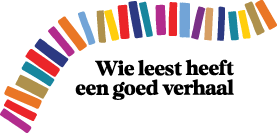Floating cradles, water wolves, a finger in the dike: what do stories about their struggle with the water tell us about the Dutch? For centuries the Dutch have battled with water. Time after time they managed to tame the water wolf, but they have had to deal at least as often with devastating floods. There was the Saint Elizabeth’s Day Flood of 1421, for example, and the North Sea flood of 1953. In the cultural representation of such catastrophic events, vulnerability and pride go hand in hand. Through photographs, stories and monuments, writers and artists have emphasized both the disastrous consequences of floods, and the resilience of the communities affected.
Water: A Dutch Cultural History tells the story of the lion of Holland, paternalistic princes, fundraising campaigns and solidarity. Lotte Jensen also shows how the cultural imagination of water has acquired new relevance with the passing of time. As rising sea levels pose an ever greater threat to future generations, recognizing our vulnerability has become more important than ever.
Water: A Dutch Cultural History tells the story of the lion of Holland, paternalistic princes, fundraising campaigns and solidarity. Lotte Jensen also shows how the cultural imagination of water has acquired new relevance with the passing of time. As rising sea levels pose an ever greater threat to future generations, recognizing our vulnerability has become more important than ever.































